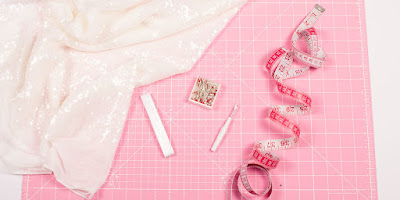Before we start with this guide we think it is important to point out that working with sequin fabric is not for the faint of heart. People who have plenty of experience working with fabrics will often find that they struggle with sequins, so we recommend that beginners get a little more used to the intricacies of the fabrics that they work with before trying their hand at adding sequins.
Still, when you get it right, sequins can add a touch of glamour to practically any garment that you design. By following these tips, you should have a much better chance of getting the end result that you’re looking for.
Have the budget
The first thing to point out is that sequin fabric by the yard can be fairly expensive stuff, especially when compared to some other basic fabrics. Add in the fact that you are likely going to have to set aside a little money in case mistakes are made and you have one of the costlier fabric endeavors you may embark upon. Make sure that you have the budget to meet your expectations.
Keep it simple
When you consider the amount of prep work that you need to do for sequinned fabric before you can work with it, it becomes obvious why you will want to keep things simple from the off. Don’t go into the work expecting to create complex patterns until you have built up plenty of experience.
Make a mock-up
Before you start working on the fabric itself, it is a good idea to create a mock-up so that you understand exactly what you are aiming to achieve. We recommend using stretch mesh for this, as it matches the texture of the sequinned fabric while also being a little easier to work with.
The lay of the sequins
The sequins in your fabric all tend to lie in a specific direction, so if you cut contrary to this you are going to find the end result is less than satisfactory. Establish which direction the sequins lie in and always cut based on that. You may feel like you’re wasting some of the fabric is doing this, but you will end up wasting a lot more if you end up with a garment that doesn’t hang in the way you expected it to because you went against the lie of the sequins.
Hang the fabric
Before you start working on the fabric, it is a good idea to leave it to hang for a few hours beforehand. This is because the sequins will likely have bunched up during transit or as a result of folding the fabric, so you want to give it all a little time to settle and smooth out before you start work.
Never iron
Your iron is your worst enemy when it comes to sequins, as it can lead to the sequins melting in addition to ruining the garment itself. If you absolutely have to flatten the end result out, use steam and a clapper to achieve the desired results.

Comments
Post a Comment